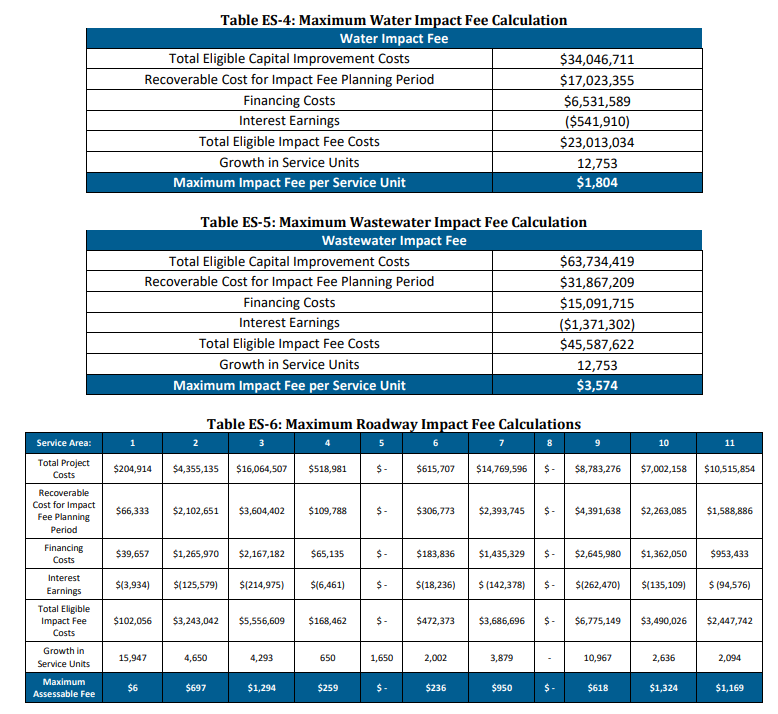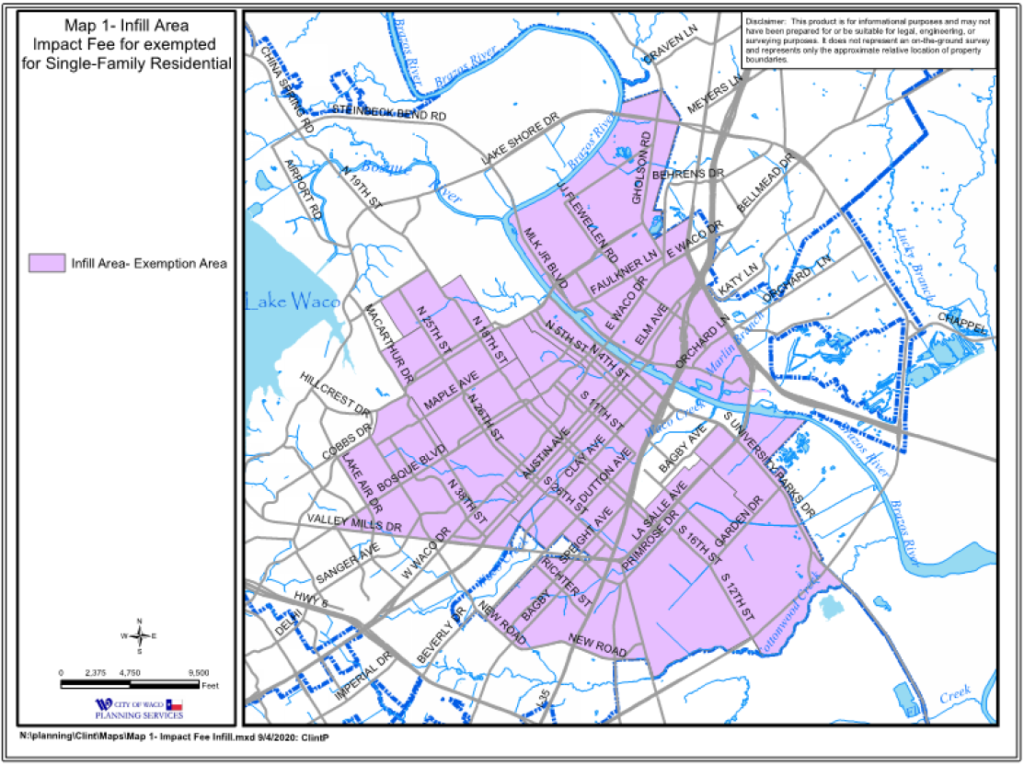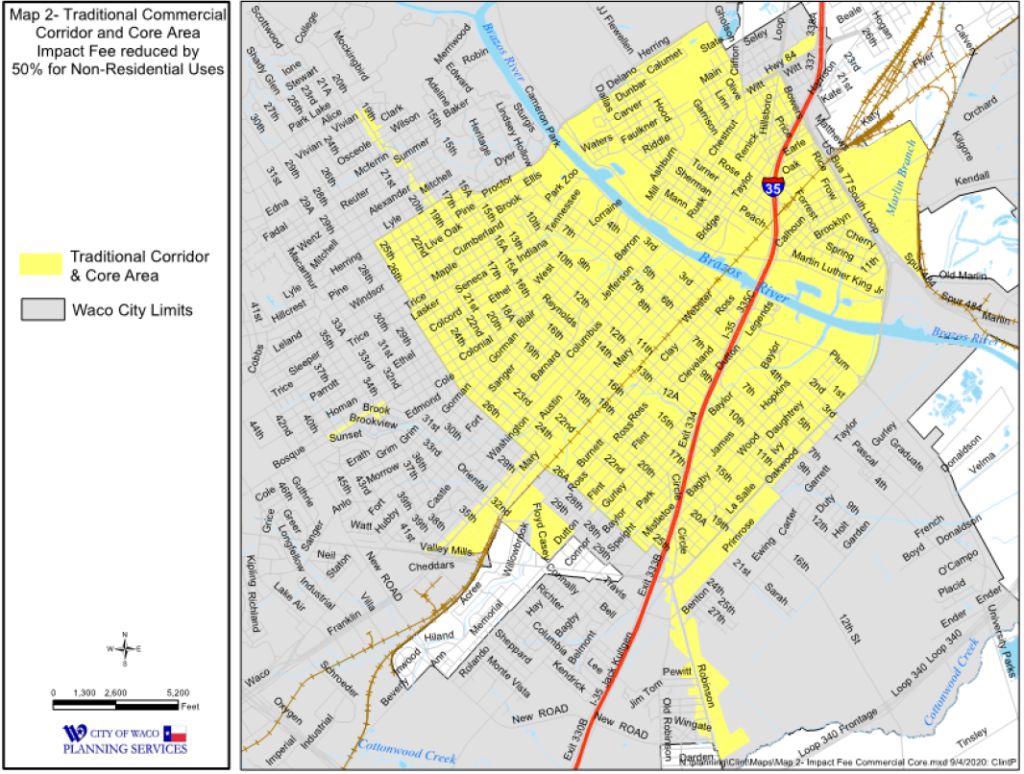Civic Insights: Who Pays for that Pipe, Part V
(City council, school board, planning commission, county commissioners – these groups and several others represent us. They do the day to day work of running our community. It is our responsibility to keep informed about their work so that we can help them represent us effectively. “Civic Insights” by Jeffrey Vitarius is a regular feature of Act Locally Waco. Its purpose is to help us understand decisions that shape our community so that we can participate effectively as informed, engaged residents of Waco. – ALW)

By Jeffrey Vitarius
We are finally coming to the end of the long impact fee process. This policy has been a goal of the city since it adopted the comprehensive twenty-five year plan in 2016. There has been intense study and discussion of the potential policy since Freese and Nichols (consulting firm) was hired to produce the study back in December of 2018. We have been writing about it here since early September. Last week, the City Council took its first vote on the initial policy that has been generated by this process. Another vote is scheduled for next Tuesday (November 6th) and this should be the final step.
Back in September, we started this discussion with a broad look at what an impact fee policy is. We moved from there to the legal process for establishing an impact fee, and finally to an examination of the pipe-related and road-related details of the Freese and Nichols report . That report will serve as the basis for any impact fee policy in Waco. Here in our final post, we will finally move from what impact fees could be to what they should be by examining the policy that was approved last week and the discussion that has occurred at the City Council level regarding how best to proceed.
The Policy
As a brief reminder, the Freese and Nichols report established the maximum allowable impact fees for water, wastewater, and roadways (the end of the could process). The results of that study are below.

All of these maximums are based upon single-family home equivalency. So, the numbers above are the maximum allowable impact fees for a single-family home. For example, a single-family home in service area seven (near China Spring) could not have an impact fee above $6,328 ($1,804 – water + $3,574 – wastewater + $950 – roadway). Developments that are not made up of single-family homes have a maximum that is scaled based on calculations of use. So if a development is anticipated to use twice as much of the infrastructure as a single-family home, the maximum impact fee for that development is twice that of the single-family home (there is a lot more detail on this front in the last two posts).
The policy the city is in the process of adopting (found in more detailed form in the ordinance that was voted on last week) starts with base impact fees that are 100% of the allowable fees established above. However, to this base fee a number of exemptions, waivers, and limits are applied.
Below is a brief list of most but not all of these adjustments with some explanation of each:
- Residential Infill Waiver – single family homes in the “residential infill area” (map below) would have all impact fees waived

- Traditional Commercial Corridor Credit – non-single family home developments in the “traditional commercial corridor area” (map below) would have impact fees reduced by 50%

- Credits for construction of system-wide facilities – from a really broad view, if the development involves the construction of system-wide facilities (those kinds of infrastructure that are not just for the development itself) a credit to account for this construction would be applied to impact fees
- Affordable Housing Waiver – if a development has at least 25% affordable housing units (costing less than 30% of a household’s income for households making less than 80% of Waco’s median income) and an additional 25% that are either affordable or “workforce” units (costing less than 30% of a household’s income for households making between 80%-120% of Waco’s median income) impact fees would be waived. There are additional allowances for +sale units as well. Eagle eyed observers may spot that some of these percentages have appeared before in discussions of the CDBG program.
- Existing Business Waiver – if an existing business expands or relocates and the project fits with a collection of conditions (for example being open at least 2 years already, and documentations showing that the expansion or relocation will provide at least as many jobs as before) all impact fees would be waived.
- Phase-in elements – the policy has an effective date of June 1st, 2021. The fees would also be phased in over the course of five years (hitting 100% in June of 2024). There is also a waiver that would apply to projects that are nearly complete.
Each of these policy adjustments has some reasoning behind it and in most cases represents an effort to avoid disincentivizing certain kinds of development. It’s economics short-hand to say that if you make something more expensive you will get less of it (like most economics, I am sure there are disputes on this point, but the general rule remains). If affordable housing became more expensive to build due to impact fees, the theory goes that some number of units would not be built because of the increased cost. So, the above adjustments tend to exempt or reduce impact fees for the kinds of development that are high priorities for the city (infill residential, core commercial, affordable housing, etc). In addition to these adjustments, the policy gives the city the ability to grant waivers on a case by case basis as well.
The phase-in elements provide developers with some time to incorporate the new impact fees into their calculations and decision making.
The downside to these adjustments is that they make a complicated policy more complicated. Much of the discussion at City Council hit upon this point.
The Discussion
Over the course of the last two City Council meetings (10/06 and 10/20) there has been substantial discussion of the policy outlined above. In general, there has been support for impact fees in theory. Most points of concern have been focused on the specifics of the policy and its timeline for implementation.
The committee formed to analyze and make recommendations on the impact fee policy (the Capital Improvements Advisory Committee – CIAC) recommended the above policy with a single exception: that the implementation of commercial impact fees be delayed for six months (essentially pushing the effective date of commercial impact fees from June 1st, 2021 to December 1st, 2021).
This recommendation exception highlights one of the key elements of the discussion around this policy. The commercial impact fee calculation is substantially more complicated than the residential impact fee calculation. This makes sense, given the variety of developments that fit under the “commercial” umbrella. For commercial developments, the variety of kinds, sizes, locations, and exemptions all factor into the impact fee calculation. The city is working on a calculator to assist developers in navigating the detailed points of this part of the policy.
Additionally, concerns were focused on whether this policy strikes the right balance between funding the needed infrastructure projects and making sure not to disincentivize development. Since this policy is new, there were also questions about when and how it could be changed.
Input that was received from the public raised similar concerns and questions regarding balance and alternatives.
Arguments were made that the substantial phase-in elements of the policy and semi-annual review by the CIAC allowed for adjustment before the full impact of the fees would be felt by developers. Additionally, the importance of associating the costs of development with development rather than existing tax and ratepayers was emphasized. Ultimately the City Council voted 5-1 to approve the policy in its first vote. The Council will vote for a second and final time next Tuesday.
Thank you for walking through this review of impact fees with me. I hope to bring you something new or at least different in November. If there are any particular civic policy or issues you would like me to take more of a look at, please feel free to comment here. Thanks again.

Jeffrey Vitarius has been actively local since early 2017. He lives in Sanger Heights with partner (JD) and his son (Callahan). He helped found Waco Pride Network and now serves as that organization’s treasurer and Pride Planning Chair. Jeffrey works at City Center Waco where he helps keep Downtown Waco clean, safe, and vibrant. He is a member of St. Alban’s Episcopal Church and graduated from Baylor in 2011.
The Act Locally Waco blog publishes posts with a connection to these aspirations for Waco. If you are interested in writing for the Act Locally Waco Blog, please email [email protected]for more information.
